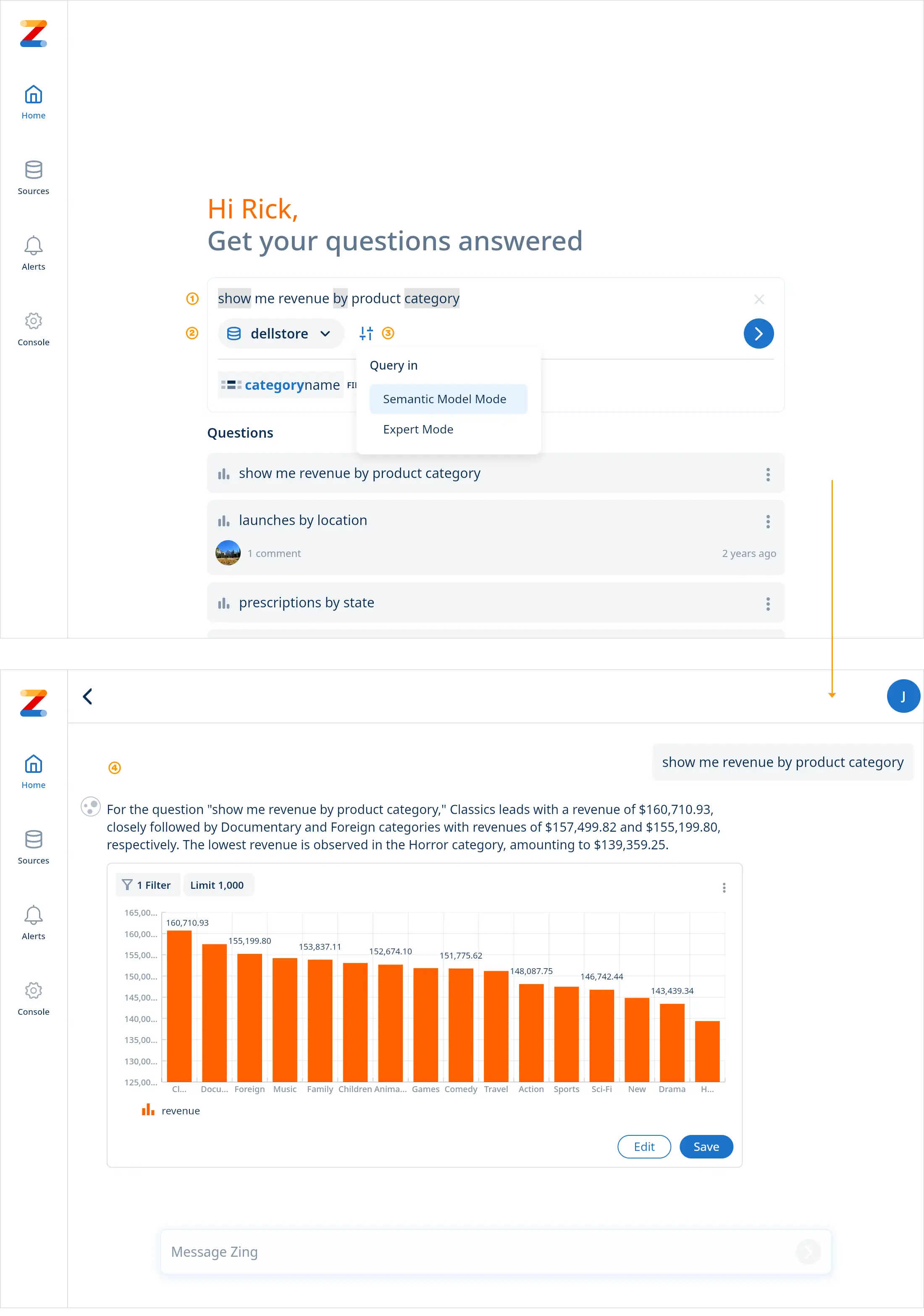With Zing’s low barrier to entry, you can start analyzing data without a semantic model. But as your team, data, and requirements grow, you can introduce a semantic model to any data source in Zing to manage complexity and ensure consistency. Terms that were once universally understood within a small team—like “daily active users” or “high-spend customers”—can lose clarity as more people interact with data. Meanwhile, broader access to analytics means more users without expertise in SQL or data structures need to extract insights. Additionally, the demand for real-time, mobile-friendly data access has surged, making usability beyond the traditional office setting essential.
Today, business users expect to query data without knowing the technical intricacies of how metrics are calculated. However, non-technical users might struggle with:
A semantic model abstracts these complexities, offering a business-friendly layer where users can interact with intuitive terms like “revenue growth” or “customer retention rate” without needing to build formulas from scratch. This leads to faster decision-making and fewer miscalculations.
A nationwide retail chain struggled with inconsistent definitions of key sales metrics across its regional branches. Each branch had its own way of calculating “high-value customers” and “repeat purchases,” leading to discrepancies in reporting and decision-making.
By implementing a semantic model, the company:
This led to improved decision-making, consistent reporting, and better customer targeting strategies across all branches.
A semantic model in the context of LLMs (Large Language Models) improves responses by enhancing the model’s ability to:
How this leads to better responses:

The modeling layer functionality is available on the Pro Plan and Enterprise Plan. To learn more and see how easy it is to upload your own model please visit our blog post semantic modeling layer.
Get started with Zing for free! Sign In or create a New Account.
Available on iOS, Android, and the web
Learn how Zing can help you and your organization collaborate with data
Schedule Demo